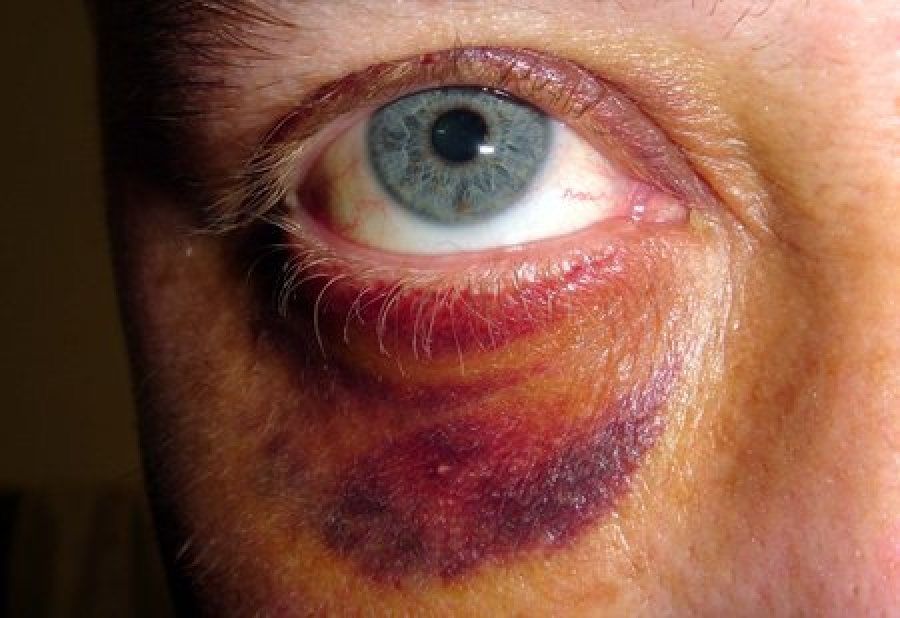Age-related macular degeneration (AMD) is a deterioration or breakdown of the eye's macula. The macula is a small area in the retina — the light-sensitive tissue lining the back of the eye. The macula is the part of the retina that is responsible for your central vision, allowing you to see fine details clearly.
Glaucoma is a disease that damages the eye's optic nerve. The optic nerve is connected to the retina — a layer of light-sensitive tissue lining the back of the eye — and is made up of many nerve fibers, like an electric cable is made up of many wires. It is the optic nerve that sends signals from your retina to your brain, where these signals are interpreted as the images you see.
Glaucoma normally progresses so slowly that there are usually no warning signs before permanent damage has occurred to the eye. Mid Atlantic Eye Physicians doctors and staff believe it is vital to educate patients about the importance of a yearly eye exam to increase early detection and treatment of glaucoma to help prevent vision loss.

What is glaucoma?
In a healthy eye, clear fluid is constantly being made behind the iris and leaving the eye through a microscopic drainage canal in the front of the eye. If this drainage channel becomes blocked, the pressure inside the eye goes up and often causes glaucoma damage to the optic nerve. This is the nerve that connects the eye to the brain so damage to it causes loss of vision.
Who is at risk?
While the causes of glaucoma are not completely known, we do know that risk factors for its development include a family history of glaucoma, race and older age. Glaucoma may affect people of any age from newborns to the elderly but is more common in adults as they approach their senior years. African-Americans, Hispanics and people with diabetes are also at increased risk of developing the disease.
No one chooses gifts with the intent to harm, but some popular children's toys can cause serious eye injuries. According to the U.S. Consumer Product Safety Commission, more than 265,000 toy-related injuries were treated in emergency rooms in 2012, and and almost half of these injuries affect the head or face – including the eyes. Unfortunately, most of these injuries happen to children under age 15.
Toy Safety Month
- Avoid purchasing toys with sharp, protruding or projectile parts.
- Make sure children have appropriate supervision when playing with potentially hazardous toys or games that could cause an eye injury.
- Ensure that laser product labels include a statement that the device complies with 21 CFR (the Code of Federal Regulations) Subchapter J.
- Along with sports equipment, give children the appropriate protective eyewear with polycarbonate lenses. Check with your Eye M.D. to learn about protective gear recommended for your child's sport.
- Check labels for age recommendations and be sure to select gifts that are appropriate for a child's age and maturity.
- Keep toys that are made for older children away from younger children.
If your child experiences an eye injury from a toy, seek immediate medical attention from an ophthalmologist – an eye medical doctor.
Many eye problems require the medical knowledge that an ophthalmologist (Eye M.D.) has from years of clinical and surgical training. But there are eye problems that you can treat safely at home, as long as they are relatively simple.
Here are a few problems that can respond to home treatment, with some tips on home remedies.
BLACK EYE
Unless there are signs of more serious symptoms of black eye such as blurred vision, blood in the eye, or inability to move the eye, a black eye can generally be treated at home. To reduce swelling and ease pain the first day, apply an ice pack to the eye for 15 to 20 minutes at a time, once every hour. If you don't have an ice pack, use a bag of frozen vegetables or ice cubes wrapped in cloth (to protect your skin from freezing). Don't put a raw steak or other raw meat on your eye. Despite what you've seen on television and in the movies, there's no scientific basis for using a raw steak to treat a black eye, and the bacteria in raw meat poses a high risk of infection.
EYE ALLERGIES
Just as you can get nasal allergies, you can get eye allergies that leave your eye red, itchy and teary. Limiting your exposure to the source of your allergy — whether it's pollen, pets or mold — can help relieve symptoms. If you can't eliminate the source entirely, there are ways to minimize its effect with eye allergy treatments. For example, if pollen bothers you, don't use a window fan, which can draw pollen into your house. Wearsunglasses when you go outside. If dust is the problem, use allergen-reducing covers for your bed. You can also use artificial tears, which temporarily wash allergens from your eyes, or over-the-counter anti-allergy eyedrops to lessen the symptoms.
STYE
While a stye may look nasty, it's usually harmless and goes away within a week. You can treat it at home by running a washcloth under warm water, wringing it out and placing it over your closed eye. When the washcloth cools, repeat the process several times. Do this three to four times a day for at least a week. The heat will help unblock the pores in your eyelash area. Don't wear eye makeup or your contact lenses while you have a stye. And don't pop or squeeze the stye. Doing so can spread infection to surrounding areas of your eye.
Pink eye (Conjunctivitis).
Most cases of pink eye are caused by a virus and so don't respond to antibiotics. Viral conjunctivitis will disappear on its own. Have your ophthalmologist diagnose your particular case. You can minimize the discomfort of conjunctivitis by applying cool compresses to the eye. If the conjunctivitis is caused by bacteria, make sure that you follow your treatment plan, which usually involves antibiotic eyedrops. In either case, you should take steps to reduce the chance of passing the problem on to someone else, because conjunctivitis is highly contagious. Don't share towels, handkerchiefs or cosmetics; change pillowcases frequently; and wash your hands often.
With any of these conditions, you shouldn't wait to see your Eye M.D. if the symptoms worsen or don't go away, or if your vision is affected.
Mid Atlantic Eye Physicians recently participated in Becker Village Mall's annual Health Fair. Shirley Jordan of Roanoke Rapids was the winner of Mid Atlantic's gift basket.



